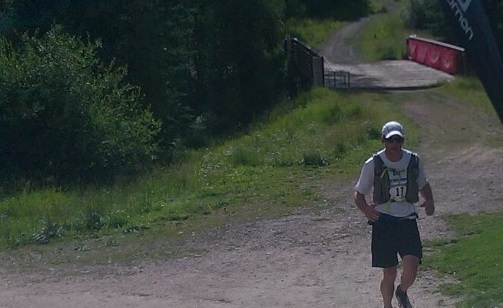Confessions of a runner: I never learned to run! (NOBLE Running form)
Confessions of a runner: I never learned to run!
(NOBLE Running form)
Currently I am resting off an injury. Just before this, I was
setting my sights on my most ambitious distance run to date. I have always
considered myself athletic. I sometimes consider myself an athlete. Until my
recent setback I was on a huge upswing.
I have cleaned
up my diet. I got back into weight training. I developed a comprehensive
training program, almost a full year
until race time! I was feeling super confident about my scenario.
Unfortunately, I sprained my ankle at work. Worse, I went out and hiked/ran on
it. (What can I say, I had plans?).
Part of my upswing, how I started running faster than I have in
years, was as simple as: Learning how to run!
I
have a confession: I NEVER LEARNED TO
RUN!
In my youth my sport was Soccer. I rode my bike extensively
(once my parents let me stray farther and farther). I tried a season of
football (not pretty), when I got into college I fell out of organized/team
sports. I hiked a lot, played Frisbee golf (I’d jog the course between
classes), and once, I tried running, for the sake of running. I
hated it!
I liked climbing Mountains. I had grown up in Minnesota, and
went to Northern Arizona University in Flagstaff. Toward the end of my college
career I got into rock climbing. I mostly became interested in ‘technical’
climbing as a way to expand my access to the world’s high places. It worked. I
feel comfortable climbing, and being exposed. With two kids, I have a pile of
climbing gear in storage collecting dust.
This doesn’t mean I don’t get into the mountains. Quite the
contrary. I have evolved into a distance runner, and am now able to see and
cover more terrain in a day than I would have fathomed backpacking in college. But I never learned to run.
Part of my recent upswing is due to the 80/20 principle, and/or
Minimum Effective Dose (Check out @tferriss blog and books). I wanted to cut
weight, and add muscle (more muscle to carry less fat = faster?). I have done
these things, worked on speed through hills or intervals.
In Emergency Services, we say “Slow is smooth, and smooth is
successful.” I have never had video analysis of my running, but I knew I was
biomechanically wonky. If I could learn and create good form as a habit, I
could do the same distances, with less work.
So, I took to google. Of course, there’s a number of articles on running, biomechanics etc. There’s videos analyzing body angles, comparing sprinters to distance runners and these things are great. I would encourage anyone who runs (or takes any sport ‘seriously’) to think and learn about biomechanics.
There’s a lot of overlap, and a little bit of divergence.
Basically a summation is:
1.
Stand Tall: Keeping your spine aligned helps your
system function best
2.
Lean Forward: Your feet should strike directly below
your center of gravity, you’re almost just catching yourself repeatedly.
3.
Don’t Reach, PUSH: Reaching to increase stride
length creates heel striking, and braking. Pushing backwards propels you
forward. To increase stride length, create more knee lift (or, generally
increase the angle between legs). Also, only swing your arms back (not
forward).
4.
Cadence: A cadence of at least 180 is maintained by
elites. This is hard to do over long distance, and not realistic for many
amateurs. However, once you find your cadence (defined as foot stikes/minute)
you can slowly increase it (160-170 is a great target for non-elites).
Cadence was the game-changer for me. This single change took my
morning run from 10-12 minute miles (hey, it’s early) down to 8-9 minutes, overnight. I had hear about cadence, but
never really paid attention to mine. Basically, I had begun to teach myself to
run (after completing multiple marathon + distance runs!).
While I was on a daily run shortly after all this, I uncovered a
mnemonic gem: NOBLE Running form. For me, this device serves many purposes.
1.
Just think Nobility: Standing tall, nose/chin up,
chest out.
2.
NO: Nose/Neck Out
3.
BL: Body Long/Bounce Less/Big Lungs
4.
BLE: Backwards Leg Extension
5.
LE: Lung Expansion
With this device, it addresses many of the most common problems.
Not to say all elites have good form (there’s many interesting analyses, and
comparisons). Again, standing tall is overall advantageous for breath,
extensions and musculoskeletal function. Extension to the rear, with arms and
legs is what propels you forward. Add in Cadence and you should ultimately run
faster, with less pain.
NOBLE + Cadence = Sustainable Speed
Interested in more Alternative
Training? Check out my posts on Slow-Carb
Diet, Occam’s
Protocol, NOBLE
running form and more!



Comments
Post a Comment